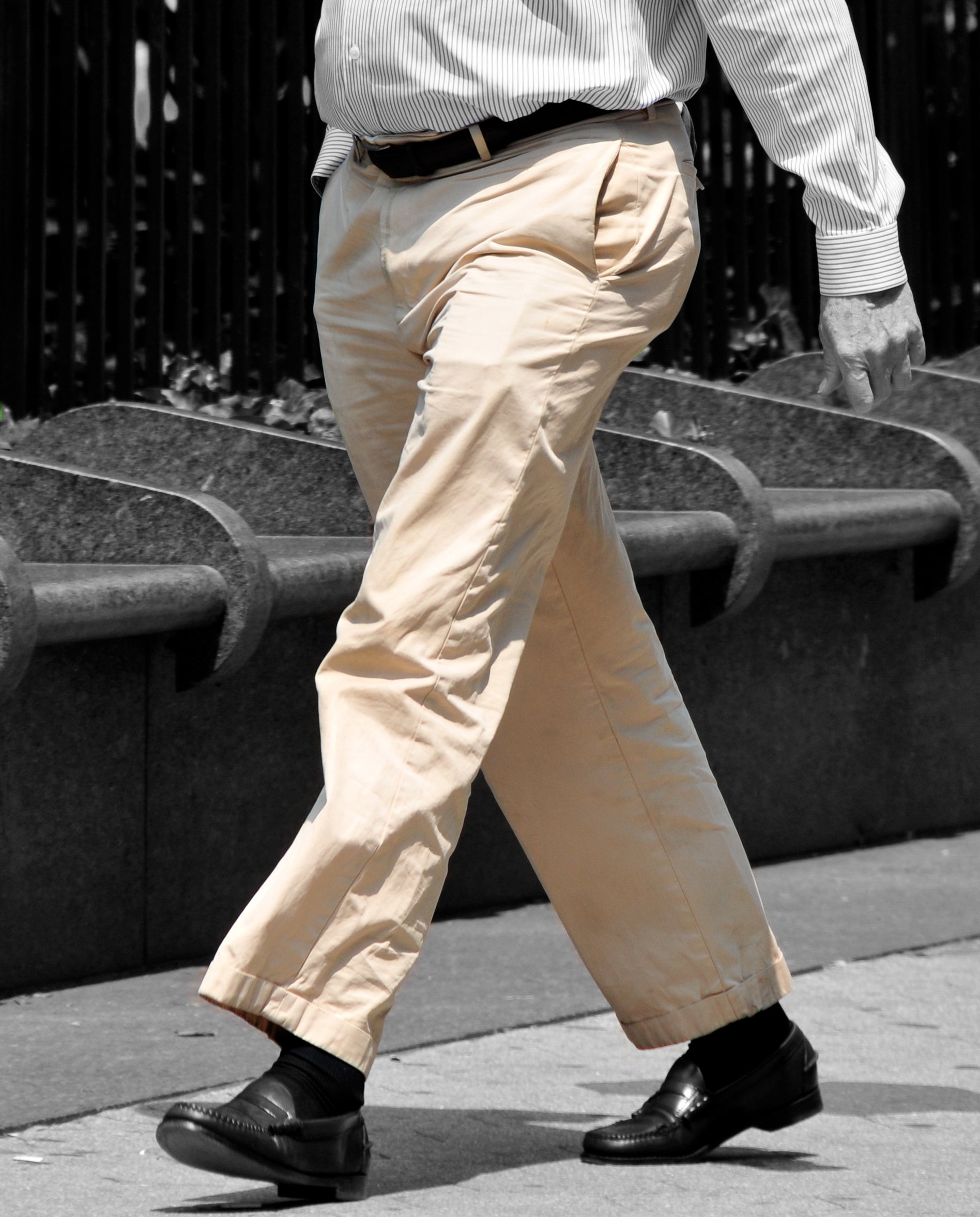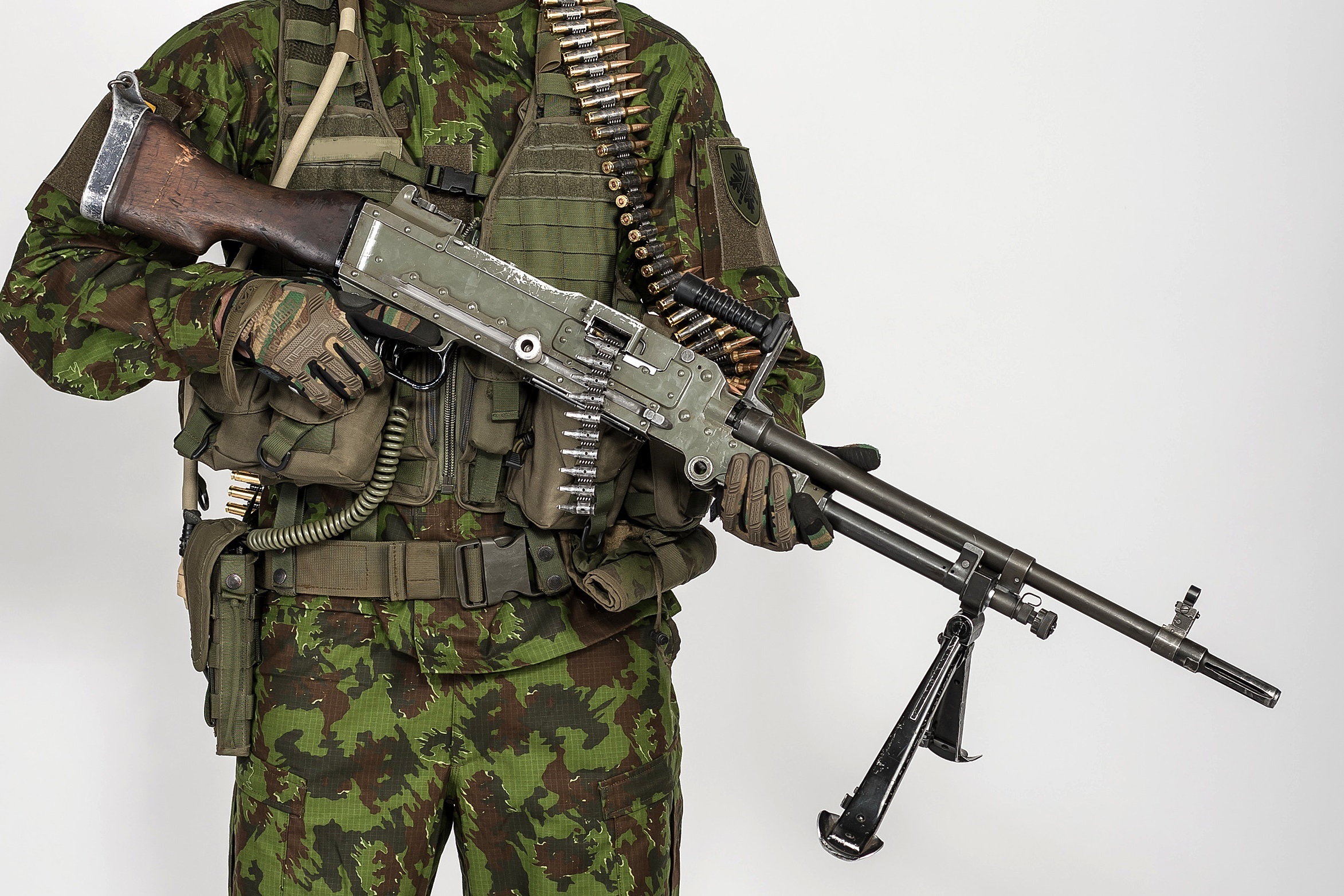|
Parachute Pants
Parachute pants, originally known as flight pants, are a style of trousers characterized by the use of nylon, especially Ripstop#Ripstop nylon, ripstop nylon. In the original tight-fitting style of the early 1980s, "parachute" referred to the pants' nylon material, similar to a parachute's. Parachute pants became a fad in US culture in the 1980s as part of the increased popularity of breakdancing. The clothing company Bugle Boy manufactured the pants in the early 1980s, although they were not the first company to manufacture parachute pants. The company Panno D'or states that they invented them, though this claim is not confirmed. However, Bugle Boy was the company that made them immensely popular, seemingly overnight. Bugle Boy parachute pants are identifiable by having the word "Countdown" on a small tag above the rear pocket's zipper. Teenage boys were the main wearers of parachute pants. They typically cost $25-$30 a pair. During the height of their popularity, 1984-1985, ... [...More Info...] [...Related Items...] OR: [Wikipedia] [Google] [Baidu] |
Trousers
Trousers (British English), slacks, or pants are an item of clothing worn from the waist to anywhere between the knees and the ankles, covering both legs separately (rather than with cloth extending across both legs as in robes, skirts, and dresses). In the United Kingdom, the word ''pants'' generally means underwear and not trousers. Shorts are similar to trousers, but with legs that come down only to around the area of the knee, higher or lower depending on the style of the garment. To distinguish them from shorts, trousers may be called "long trousers" in certain contexts such as school uniform, where tailored shorts may be called "short trousers" in the UK. The oldest known trousers, dating to the period between the thirteenth and the tenth centuries BC, were found at the Yanghai cemetery in Turpan, Sinkiang ( Tocharia), in present-day western China. Made of wool, the trousers had straight legs and wide crotches and were likely made for horseback riding. In most of Europe, ... [...More Info...] [...Related Items...] OR: [Wikipedia] [Google] [Baidu] |
Nylon
Nylon is a generic designation for a family of synthetic polymers composed of polyamides ( repeating units linked by amide links).The polyamides may be aliphatic or semi-aromatic. Nylon is a silk-like thermoplastic, generally made from petroleum, that can be melt-processed into fibers, films, or shapes. Nylon polymers can be mixed with a wide variety of additives to achieve many property variations. Nylon polymers have found significant commercial applications in fabric and fibers (apparel, flooring and rubber reinforcement), in shapes (molded parts for cars, electrical equipment, etc.), and in films (mostly for food packaging). History DuPont and the invention of nylon Researchers at DuPont began developing cellulose based fibers, culminating in the synthetic fiber rayon. DuPont's experience with rayon was an important precursor to its development and marketing of nylon. DuPont's invention of nylon spanned an eleven-year period, ranging from the initial research pr ... [...More Info...] [...Related Items...] OR: [Wikipedia] [Google] [Baidu] |
Ripstop
__NOTOC__ Ripstop fabrics are woven fabrics, often made of nylon, using a reinforcing technique that makes them more resistant to tearing and ripping. During weaving, stronger (and often thicker) reinforcement yarns are interwoven at regular intervals in a crosshatch pattern. The intervals are typically 5 to 8 millimeters (0.2 to 0.3 in). Thin and lightweight ripstop fabrics have a 2-dimensional structure due to the thicker yarns being interwoven in thinner cloth. Older lightweight ripstop fabrics display the thicker interlocking thread patterns in the material quite prominently, but more modern weaving techniques make the ripstop threads less obvious. A similar effect can be achieved by weaving two or three fine yarns together at smaller intervals.Fairchild's Dictionary of Textiles, 7th edition, pg. 474 Advantages of ripstop are the favourable strength-to-weight ratio and that small tears can not easily spread. Fibers used to make ripstop include cotton, silk, polyester, and ... [...More Info...] [...Related Items...] OR: [Wikipedia] [Google] [Baidu] |
Parachute
A parachute is a device used to slow the motion of an object through an atmosphere by creating drag or, in a ram-air parachute, aerodynamic lift. A major application is to support people, for recreation or as a safety device for aviators, who can exit from an aircraft at height and descend safely to earth. A parachute is usually made of a light, strong fabric. Early parachutes were made of silk. The most common fabric today is nylon. A parachute's canopy is typically dome-shaped, but some are rectangles, inverted domes, and other shapes. A variety of loads are attached to parachutes, including people, food, equipment, space capsules, and bombs. History Middle Ages In 852, in Córdoba, Spain, the Moorish man Armen Firman attempted unsuccessfully to fly by jumping from a tower while wearing a large cloak. It was recorded that "there was enough air in the folds of his cloak to prevent great injury when he reached the ground." Early Renaissance The earliest evidence f ... [...More Info...] [...Related Items...] OR: [Wikipedia] [Google] [Baidu] |
US Culture
The culture of the United States of America is primarily of Western, and European origin, yet its influences includes the cultures of Asian American, African American, Latin American, and Native American peoples and their cultures. The United States has its own distinct social and cultural characteristics, such as dialect, music, arts, social habits, cuisine, and folklore. The United States is ethnically diverse as a result of large-scale European immigration throughout its history, its hundreds of indigenous tribes and cultures, and through African-American slavery followed by emancipation. America is an anglophone country with a legal system derived from English common law. Origins, development, and spread The European roots of the United States originate with the English and Spanish settlers of colonial North America during British and Spanish rule. The varieties of English people, as opposed to the other peoples on the British Isles, were the overwhelming majorit ... [...More Info...] [...Related Items...] OR: [Wikipedia] [Google] [Baidu] |
Breakdancing
Breakdancing, also called breaking or b-boying/b-girling, is an athletic style of street dance originating from the African American and Puerto Rican communities in the United States. While diverse in the amount of variation available in the dance, breakdancing mainly consists of four kinds of movement: toprock, downrock, power moves and freezes. Breakdancing is typically set to songs containing drum breaks, especially in hip-hop, funk, soul music and breakbeat music, although modern trends allow for much wider varieties of music along certain ranges of tempo and beat patterns. The modern dance elements of breakdancing originated among the poor youth of New York during the early 1970s, where it was introduced as breaking. It is closely attributed to the birth of hip-hop, as DJs developed rhythmic breaks for dancers. The dance form has since expanded globally, with an array of organizations and independent competitions supporting its growth. Breaking will now be featured ... [...More Info...] [...Related Items...] OR: [Wikipedia] [Google] [Baidu] |
Bugle Boy
Bugle Boy Industries, Inc. was a clothing company founded by William Mow in 1977. It is perhaps best known for its namesake brand of denim jeans that were popular in the 1980s. The company declared bankruptcy in 2001. William C. W. Mow (Traditional Chinese: 毛昭寰) was born in Hangzhou, China, and later moved with his family to the United States. He graduated from Rensselaer Polytechnic Institute in 1959 and then earned an MSEE from Polytechnic Institute of Brooklyn and a Ph.D. in electrical engineering from Purdue University in 1967. He worked for Litton Industries for two years before venturing out on his own. Mow founded Macrodata based on his invention of a method of testing large-scale integrated chips and the company went public in 1973. Around 1976, Mow sold his shares and left the company due to an investigation by the SEC. Although he was later cleared, he had to stay out of the electronics design industry for a few years due to a non-competition clause he had signed wit ... [...More Info...] [...Related Items...] OR: [Wikipedia] [Google] [Baidu] |
1980s In Fashion
Fashion of the 1980s was characterized by a rejection of 1970s fashion. Punk fashion began as a reaction against both the hippie movement of the past decades and the materialist values of the current decade. The first half of the decade was relatively tame in comparison to the second half, which was when apparel became very bright and vivid in appearance. Hair in the 1980s was typically big, curly, bouffant and heavily styled. Television shows such as ''Dynasty'' helped popularize the high volume bouffant and glamorous image associated with it. Women in the 1980s wore bright, heavy makeup. Everyday fashion in the 1980s consisted of light-colored lips, dark and thick eyelashes, and pink or red rouge (otherwise known as blush). Some of the top fashion models of the 1980s were Brooke Shields, Christie Brinkley, Gia Carangi, Joan Severance, Kim Alexis, Carol Alt, Yasmin Le Bon, Renée Simonsen, Kelly Emberg, Inès de La Fressange, Tatjana Patitz, Elle Macpherson, and Paulina Porizk ... [...More Info...] [...Related Items...] OR: [Wikipedia] [Google] [Baidu] |
Jumpsuit
A jumpsuit is a one-piece garment with sleeves and legs and typically without integral coverings for feet, hands or head. The original jump suit is the functional one-piece garment used by parachuting, parachuters. The original skydivers' jumpsuits were simple garments designed to insulate the body from the colder temperature that's associated with higher altitudes and minimize the risk of covering important handles and grips. Today, however, the garment has found other uses. Jumpsuits are generally regarded as a garment of convenience, especially for entertainers, as they are simpler, lighter and more flexible to wear. They have become more of a put on and remove garment than an ensemble outfit. However, unless the jumpsuit has an opening on the rear (a "drop seat"), it is necessary to remove it entirely for bathroom use. History of a jumpsuit A jumpsuit is a one-piece dress which fits slim and covers the arms and legs. Its history goes back to 1919. It was created as ... [...More Info...] [...Related Items...] OR: [Wikipedia] [Google] [Baidu] |
Downrock
In dance, floorwork refers to movements performed on the floor. Floorwork is used extensively in modern dance, particularly Graham technique and Hawkins technique, as well as in vernacular breakdancing. Some dance training practices, notably Floor-Barre, consist entirely of floorwork. Floorwork changes the body's relationship with gravity, and requires dancers to navigate between higher and lower levels ("going in and out of the floor"). These features are central to the use of floorwork in choreography, and also affect its role in technique classes. Executing floorwork smoothly requires flexible joints, a relaxed body, and attention to the kinesthetic feedback provided by the floor. The "low" or floorwork level is one of three principal spatial levels dancers may occupy, along with the middle or bipedestrian (upright) and the high or aerial (jumping) levels. Concert dance The use of floorwork is one of the major differences between modern dance and previous Western concert da ... [...More Info...] [...Related Items...] OR: [Wikipedia] [Google] [Baidu] |
Dance Costume
A dance costume is the clothing worn by a dancer when performing before an audience. A dance costume may be custom designed for use in a specific dance work, or it may have a traditional design, such as those used in some ceremonial and folk dances. Typically, dance costumes are designed to harmonize with the dance and not hinder the movements of the dancer. When created for a specific work, a costume may be designed to expose or enhance the lines formed by the dancer's body, or to express the choreographer's artistic vision, or to engage the audience, or combinations of these. A costume may portray or relate to some characteristic, mood, or theme of the dance. It may fit loosely or it may be form-fitting to emphasize the form of the dancer's body. Costumes are designed in accordance with aesthetic requirements, the anticipated movements of the dancer, and budget. Various people may collaborate in designing a costume, including the choreographer, costume designer, costume maker ( ... [...More Info...] [...Related Items...] OR: [Wikipedia] [Google] [Baidu] |









